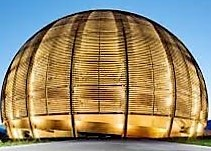Speaker
Description
Accreting neutron stars offer unique opportunities to study the properties of matter in extreme density environments and nuclear processes involving very unstable isotopes. X-ray burst are one of the rich observables that can be used to test models of accreting neutron stars. The burst are driven by thermonuclear reactions near the surface of the neutron star that proceed through (a,p) and (p,g) reactions and drive the reaction flow towards the proton dripline, involving nuclei with poorly constrained nuclear reaction rates. Sensitivity studies to evaluate the impact of these reactions in the results of X-ray burst are an effective method to guide efforts to measure and constrain the rates experimentally [1]. We present results of a single-zone sensitivity study that extend previous work of Cyburt et al to a range of different low-mass X-ray binary systems. Our study accounts for the variability in the accretion rate and composition of the accreted material observed in these systems [2]. We discuss how the impact of different reaction rates depends on these parameters.
[1] R. Cyburt et al, ApJ 830, 55 (2016)
[2] D. K. Galloway, A. J. Goodwin, L. Keek, PASA 34, e019 (2017)
